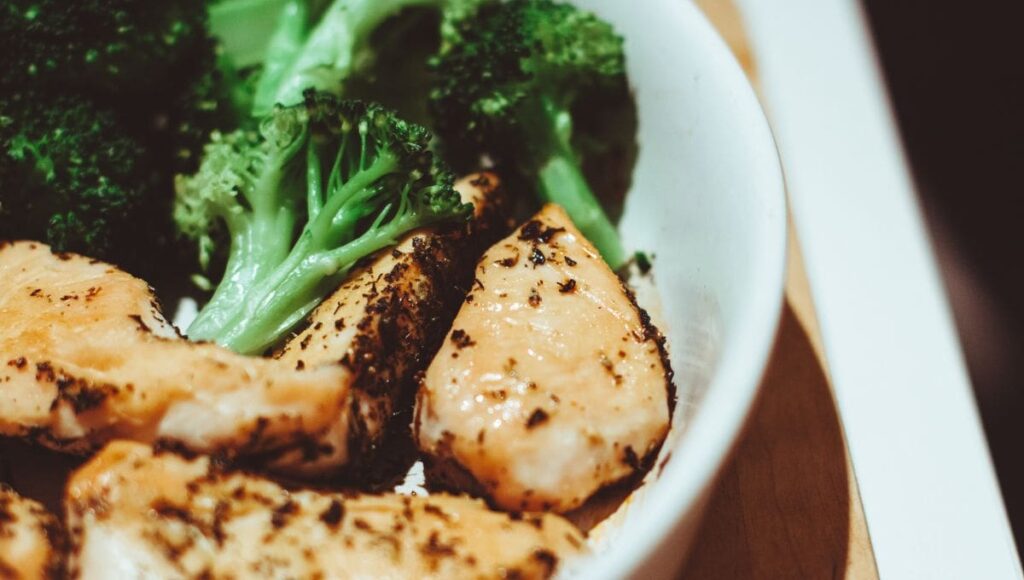1. Prioritise Caloric Deficit for Fat Loss
A six-pack is primarily a result of low body fat levels, making a caloric deficit essential. To achieve this, you must consume fewer calories than you burn, forcing your body to use stored fat for energy.
Research shows that a caloric deficit of 500–750 kcal per day can lead to sustainable fat loss of 0.5–1 kg per week (Hall et al., 2011). This reduction should be achieved through a combination of diet and exercise rather than extreme caloric restriction, which can lead to muscle loss and metabolic slowdown.
2. Consume a High-Protein Diet
Protein plays a crucial role in preserving lean muscle mass while cutting fat. A study by Pasiakos et al. (2013) found that a higher protein intake during calorie restriction helps maintain muscle mass and promotes fat loss.

Aim for at least 1.6–2.2 g of protein per kg of body weight per day, sourced from lean meats, eggs, fish, dairy, and plant-based options like tofu and legumes.
3. Engage in Resistance Training
Resistance training stimulates muscle growth and increases metabolic rate, helping to reveal abdominal definition. A meta-analysis by Schoenfeld, Ogborn, and Krieger (2016) demonstrated that training each muscle group at least twice per week optimises hypertrophy. Compound movements such as squats, deadlifts, and overhead presses engage the core, while targeted exercises like weighted crunches and hanging leg raises develop abdominal musculature.
4. Incorporate High-Intensity Interval Training (HIIT)
HIIT has been shown to be highly effective in reducing body fat and improving cardiovascular fitness. Research indicates that HIIT burns more fat than steady-state cardio while preserving muscle mass (Alkahtani et al., 2013). A typical HIIT workout could involve 30-second sprints followed by 30-second rest periods, repeated for 15–20 minutes.

5. Improve Gut Health for Better Absorption and Fat Metabolism
A healthy gut microbiome supports digestion, nutrient absorption, and fat metabolism. Research suggests that gut bacteria can influence body composition and fat storage (Johnston et al., 2017). Foods rich in probiotics (yogurt, kefir, fermented vegetables) and prebiotics (bananas, garlic, onions) can promote beneficial gut bacteria, enhancing metabolic efficiency and reducing bloating for a more defined midsection.
6. Manage Stress and Optimise Sleep
Chronic stress elevates cortisol levels, which can lead to increased fat storage, particularly in the abdominal region (Epel et al., 2000). Stress management techniques such as meditation, deep breathing, and exercise can help regulate cortisol. Additionally, insufficient sleep negatively impacts metabolism and fat loss. A study by Wang et al. (2018) found that individuals sleeping fewer than six hours per night had a higher risk of weight gain. Aim for 7–9 hours of quality sleep per night.
7. Reduce Processed Foods and Refined Carbohydrates
Highly processed foods and refined carbohydrates cause insulin spikes and contribute to fat accumulation. A study by Ludwig et al. (1999) found that high-glycaemic foods increase hunger and fat storage. Prioritising whole foods such as vegetables, lean proteins, healthy fats, and complex carbohydrates (quinoa, brown rice, sweet potatoes) stabilises blood sugar and supports fat loss.
Key Takeaways
This content is originated from https://www.boxrox.com your Online Magazine for Competitive Fitness.